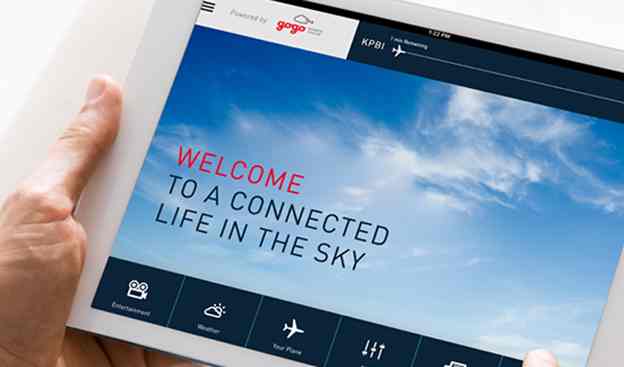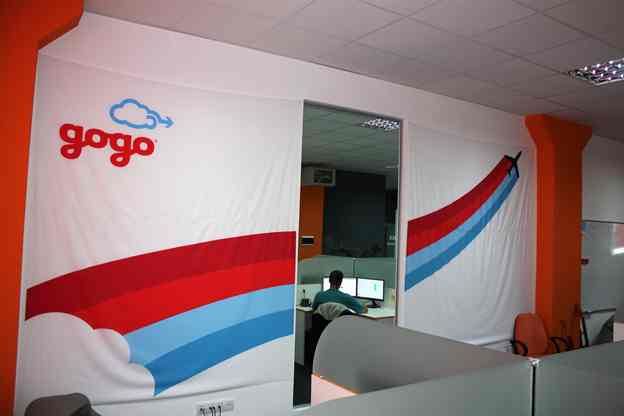This company started as a sketch on a napkin, and now it’s a global in-flight Internet provider

Gogo is a Chicago-based tech company and one of the global leaders in in-flight connectivity. The company houses more than 1,000 employees.
Passengers may choose among different Wi-Fi passes and subscription plans that fit their specific needs to stay connected and tuned-in during the flight. Aircraft travelers can surf the Internet, check email, access corporate VPNs, enjoy the latest TV shows, watch breaking news, and send text messages.
And it all started as a drawing on a napkin…
More than 20 years ago company founder Jimmy Ray sketched a groundbreaking idea of an aircraft telephone system on a napkin. It happened in a BBQ restaurant in Denison. And in 1997 Gogo, previously known as the brand Aircell, started providing phone service for business aviation. In 2008 Gogo officially launched its services on commercial aircraft – American Airlines, then Virgin America.

Gogo has partnerships with 16 commercial airlines and has installed in-flight connectivity technology on more than 2,900 commercial aircraft and over 6,600 business aircraft. At present Gogo provides continuous coverage with minimal interruptions in speed. Total bandwidth for all users on the flight is around 3 Mbit/s. Gogo services work on any device that has Wi-Fi capability.
Using cloud and Big Data to bring the internet to the sky
Gogo uses AI for equipment monitoring and to enhance in-flight customer experience, partly by applying machine intelligence to user behavior (e.g., the devices they use) and flight information (flight length and destination city). The reports have already convinced two airlines to redesign their in-flight entertainment systems
The company is constantly improving its services, and to ensure smooth operation and the best speed of the in-flight Internet, it needed to collect and analyze a great amount of data. Such data included structured data like system uptime and latency and unstructured data like the number of concurrent Wi-Fi sessions and video views during a flight. Therefore, they had difficulty collecting, storing and processing their data.

Gogo wanted to migrate their on-premise data solutions to the cloud, make them scalable, and enhance the user experience based on predictive analytics.
As they needed to extend their engineering capacities, they started cooperating with N-iX development team and as a result, performed a complete transition of Gogo solutions to the cloud and built a unified data platform.

Since the cooperation started, N-iX engineers have developed an end-to-end delivery pipeline: from the moment when the data is collected from the equipment to the moment when the logs are aggregated, analyzed, processed, and stored in a unified data warehouse. The system is centralized, and all the data is taken from one source. This way, predictive analytics by Gogo became more streamlined, efficient, and rigorous.

Gogo uses AI for equipment monitoring and to enhance in-flight customer experience, partly by applying machine intelligence to user behavior (e.g., the devices they use) and flight information (flight length and destination city). The reports have already convinced two airlines to redesign their in-flight entertainment systems. Tetiana Boichenko, marketing manager at N-iX LLC. She’s been working in technology companies for three years writing about emerging technologies like blockchain, AI/Machine Learning and their implication for business, particularly focusing on fintech domain.




